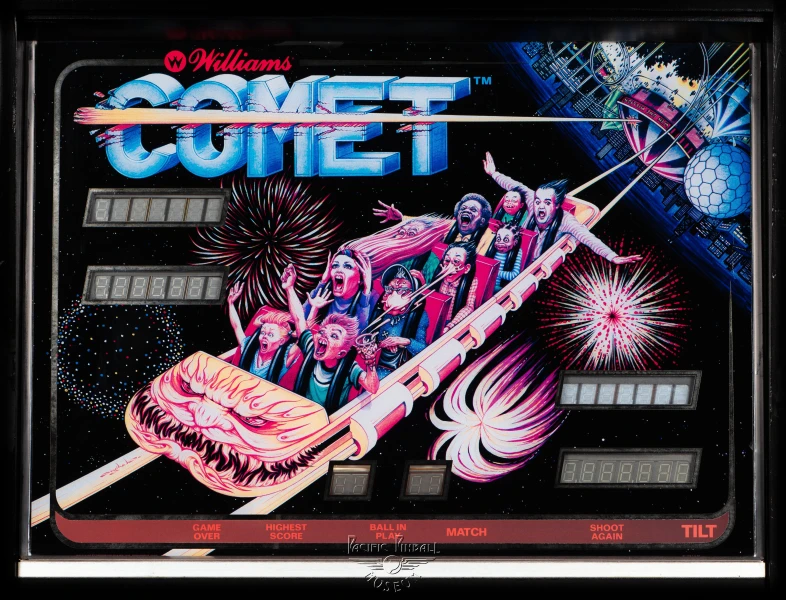Comet
Comet Preview Image

Machine Details
Manufacturer
n/a
Year
n/a
Technology Era
n/a
Machine Description
Content Under Review
Help us improve this content
Your support accelerates our content verification efforts.
Support Our WorkWilliams' 'Comet' pinball machine, released in 1985, marked the beginning of what would become known as the 'roller coaster trilogy,' followed by 'Cyclone' (1988) and 'Hurricane' (1991). Designed by Barry Oursler with artwork by Python Anghelo, Comet captured the thrilling experience of classic wooden roller coasters and amusement parks of the era.
The machine's gameplay centered around an innovative roller coaster track layout that guided the ball through various twists and turns, simulating an actual coaster ride. Notable features included a unique wire-form ramp that created a thrilling 'lift hill' shot, multiple multiball capabilities, and a distinctive sound package that incorporated authentic roller coaster sounds and carnival music. The playfield design was praised for its flow and challenge, featuring drop targets, spinner lanes, and various skill shots that kept players engaged.
Comet proved to be a commercial success for Williams, with approximately 8,100 units produced. Its popularity helped establish the amusement park theme as a viable concept for pinball designs, influencing numerous future machines. The game is particularly celebrated for its perfect balance of accessibility for casual players while offering enough depth and challenge for skilled enthusiasts. Today, Comet remains highly sought after by collectors and is considered a quintessential example of mid-1980s solid-state pinball design.